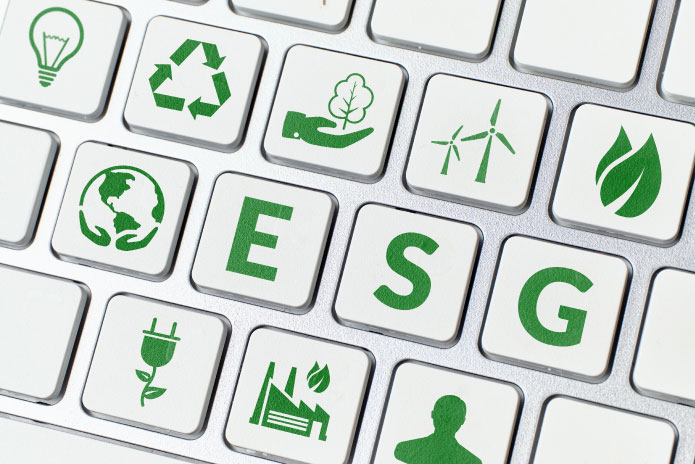Investing in ESG (environmental, social, and governance) projects cannot and should not be just a marketing maneuver to improve a company’s image or ‘play nice’ on social media. Likes and views don’t change the world. Nor do they sustain a reputation when there’s a lack of coherence between words and actions. Real ESG requires intention, purpose, and a genuine commitment to positive impact.
It’s easy to fall into the temptation of launching a campaign on social media with pretty pictures, inspiring speeches, and trendy hashtags. But what happens when the spotlight fades or a crisis hits? ESG cannot be performance. It must be coherence. It’s not about seeming responsible—it’s about being responsible even when no one is watching.
The consultancy Sustainalytics recently identified that 50% of companies with ESG goals lack internal governance aligned with their public commitments, which weakens the effectiveness and perception of these actions. Additionally, according to a global PwC survey, a network of audit and consulting firms, 78% of investors say they may divest from companies involved in greenwashing, reinforcing the importance of clear and auditable goals.
ESG washing, when companies use the ESG acronym merely as a marketing tool without adopting concrete and structured practices, has become one of the biggest risks to the credibility of the sustainability agenda. When an organization promotes environmental, social, or governance campaigns just to ‘appear responsible’ without truly acting with coherence and depth, it contributes to the trivialization of the topic and erodes public and investor trust. These cosmetic actions, often accompanied by empty slogans and doctored reports, create a perception of opportunism. Instead of generating value, such practices weaken the company’s reputation and, more seriously, delegitimize the ESG movement as a whole. The public notices when there’s a disconnect between rhetoric and reality, and this can lead to boycotts, regulatory investigations, and a reputational crisis that’s hard to reverse.
The negative impact isn’t limited to the company committing the ‘washing.’ When many organizations adopt this superficial approach, the entire market becomes tainted with a kind of collective cynicism. Investors grow more skeptical, regulators tighten requirements, and consumers become disillusioned with sustainability promises. The result is that companies working seriously and investing in structural changes end up lumped together with those merely engaging in propaganda. This confusion affects access to sustainable capital, reduces civil society engagement, and delays important progress. In other words, ESG washing isn’t just ineffective—it’s disguised progress.
Beyond that, every ESG investment must be planned based on the company’s maturity level. Copying ready-made models or importing standards that don’t fit the business reality is pointless. We’ve seen a lot of ‘off-the-shelf ESG’ in the market. What works for a multinational may be unsustainable for a mid-sized company, and so on.
Moreover, the available budget and external context—such as the economic scenario, political stability, and regulatory requirements—must also be considered. ESG doesn’t exist in a bubble. It exists in the real world, with its complexities, risks, and opportunities. Therefore, a sense of realism is essential in the ESG journey.
The ESG market has suffered setbacks, primarily originating from the United States. During Donald Trump’s return to the presidency on January 20, 2025, an executive order was immediately signed withdrawing the U.S. from the Paris Agreement. Additionally, there was accelerated dismantling of environmental regulations, such as cuts to agencies, reduced monitoring of gas emissions, the removal of ‘climate science’ from official websites, and facilitated approval of fossil fuel projects on public lands. This legislative and institutional reversal ushered in the so-called ‘greenhushing,’ where companies continue sustainable investments but avoid labeling them as ESG or ‘green’ to minimize political risks and negative backlash.
On the economic front, the Trump administration implemented broad tariffs, with imports subject to average rates of up to 15%, which disrupted global supply chains, raised input costs, and created widespread uncertainty. The resulting crisis triggered a global market crash in April 2025, directly impacting companies committed to clean energy and turning sustainable projects into higher-risk investments.
In the social and governance fields—the ‘S’ and ‘G’ of ESG—there were significant setbacks. Federal Diversity, Equity, and Inclusion (DEI) programs were eliminated by executive orders, and the Department of Labor proposed rules to prevent retirement plans from considering ESG factors as standard or demonstrating differentiated financial impact. The combination of a hostile political environment, legislative obstruction, and volatile economic conditions reduced corporate and investor appetite for responsible initiatives. Although Europe and parts of Asia maintained the pace of sustainable transition, the U.S. weakened its global leadership role in ESG, fragmenting standards and making the sustainability market more complex and polarized.
Therefore, before posting, plan. Before promising, align with strategy. ESG that transforms doesn’t start with marketing—it starts with governance. Intentionality, transparency, and ethics are the best allies for ESG programs.


